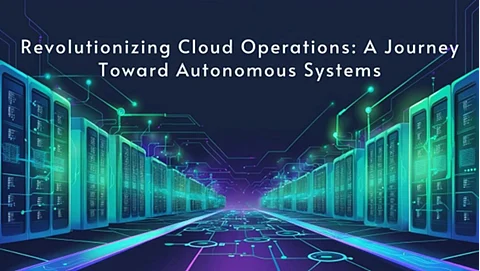

In the modern digital era, Cloud computing has come a long way since its early days of manual infrastructure management. In his article, Bhanu Prakash Kolli sheds light on how cloud platform engineering has transformed from manual configurations and labor-intensive processes to fully automated, self-healing systems. This evolution, which has redefined cloud computing, marks a shift from traditional methods to advanced technologies such as Infrastructure as Code (IaC), containerization, Kubernetes, GitOps, and AI-powered operations.
From 2006 to 2010, cloud infrastructure relied on manual processes, with engineers provisioning virtual machines and handling deployments through runbooks and checklists. This led to inefficiencies like "configuration drift" and human errors, causing up to 80% of outages and consuming 70% of IT teams' time on maintenance. The introduction of Infrastructure as Code (IaC) tools such as Chef, Puppet, and Terraform revolutionized infrastructure management by enabling version-controlled, repeatable processes. This shift improved deployment velocity, reducing provisioning time by up to 80% and allowing organizations to focus more on innovation rather than maintenance.
Infrastructure as Code (IaC) revolutionized cloud platform engineering by allowing infrastructure to be defined in code and stored in version-controlled repositories. This shift brought software engineering practices to cloud operations, enabling faster deployments and fewer manual errors. IaC’s declarative nature lets engineers specify the desired end state, rather than focusing on the process to achieve it. Additionally, version control enhances governance and compliance, particularly in regulated industries, by incorporating formal code reviews and audits. IaC also improved security, consistency, and multi-environment deployment, addressing long-standing issues like the "it works on my machine" problem.
Containerization, popularized by Docker and Kubernetes in the early 2010s, revolutionized application deployment by creating isolated, consistent runtimes that could run anywhere, regardless of the underlying infrastructure. This innovation increased server utilization and reduced infrastructure costs compared to traditional virtual machines. Containers allowed organizations to achieve higher efficiency and performance with minimal overhead. The shift also enabled development teams to focus on building applications rather than managing the underlying environment, transforming infrastructure management in the process.
Kubernetes revolutionized container management by providing an orchestration platform for scaling applications. It introduced declarative deployment, allowing organizations to define their desired state while ensuring the system maintained consistency. Kubernetes also featured self-healing capabilities, automatically restarting failed containers and rescheduling them when nodes became unhealthy. These features improved operational resilience, reduced downtime, and minimized manual intervention, enabling engineers to focus on innovation instead of handling incidents and operational complexities in large-scale container deployments.
GitOps, emerging around 2018, enhanced Infrastructure as Code and Kubernetes by unifying infrastructure and application management. It extended version control practices, using Git repositories as the single source of truth for both infrastructure and deployments. This approach eliminated discrepancies between intended and actual states. The key innovation was reconciliation controllers, which continuously monitored and corrected deviations from the desired state. GitOps improved deployment reliability and consistency across environments, with the added benefit of enabling easy rollback to known-good configurations. This was especially valuable in highly regulated industries, ensuring control and stability.
After automation gained prominence as a practice, the next frontier in cloud engineering featured the fully autonomous cloud platforms: where basic automation is enhanced with AI-driven architecture and self-optimizing systems. By analyzing operational data and trends via artificial intelligence and machine learning, these systems automatically change configurations to ramp up performance, cost-efficiency, and reliability, all without human input. Operational efficiency is thus improved by AI-powered platforms, which continuously monitor and adapt to the changing needs with minimal manual intervention. This self-healing and self-optimizing approach helps release engineers to concentrate on strategic objectives instead of trying to attend to day-to-day operations. This next era of engineering is especially beneficial in managing multi-cloud and hybrid cloud environments to achieve transparent workload management for multiple cloud providers.
Emphasizing the journey from manual infrastructure management to fully autonomous cloud systems showcases the brand new achievements that have been made in cloud platform engineering. Each new development, be it IaC and containerization, Kubernetes with GitOps, or AI-powered automation, have steered the world towards more uncomplicated cloud strafing and business transformation. On that note, as Bhanu Prakash Kolli comments, with cloud platforms getting more intelligent and self-optimizing, cloud engineering is set towards reducing operating overhead with value delivery being the organization's focus.
